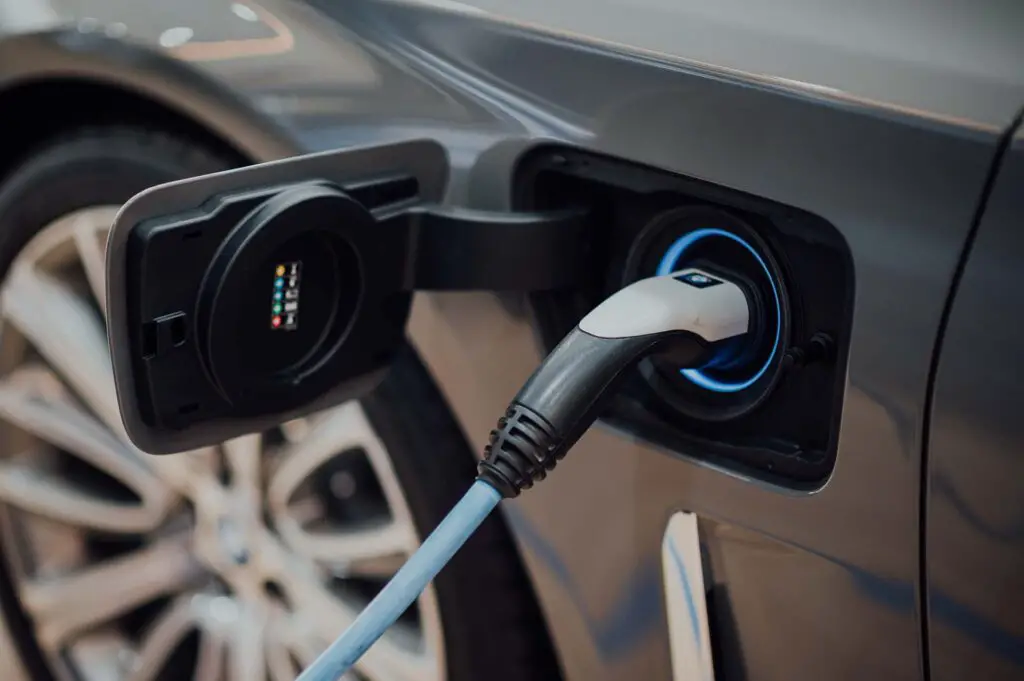While drivers usually complain about certain car parts that need to be replaced or fixed, when it comes to catalytic converters, the drivers’ biggest concern is actually theft. But what cars are targeted for catalytic converter theft, and what are the reasons behind it? If you wish to know more about the most targeted four-wheelers but also learn about catalytic converter theft prevention, this article will answer all of your questions.
What types of cars are targeted for catalytic converter theft and why? Some of the vehicles most targeted for catalytic converter theft are the Ford F-Series, Honda Accord, Chevrolet Silverado, Honda CR-V, Jeep Patriot, and Toyota Prius. The reasons why their conversation gets stolen is either in the precious metals used in the convert design or easy and quick accessibility thieves have to this car part on certain vehicles.
What is a Catalytic Converter?
A catalytic converter is a device that transforms hazardous engine exhaust particles into less hazardous ones. Through a chemical reaction, nitrogen oxides and carbon monoxide are transformed into nitrogen, carbon dioxide, and water vapor, which are better (or less bad) for the environment. This component is part of the car’s exhaust system and is placed on the bottom side of the vehicle, usually more toward the rear.
How Does a Catalytic Converter Work?
This device is a small cell structure with two ceramic blocks, with precious metals such as platinum, palladium, and rhodium covering the side of the cells. Bad pollutants pass through the cells and interact with the metal surfaces there. The metals stimulate the breakdown and recombination of toxic chemicals, releasing less toxic particles into the exhaust pipe.

Why Do People Steal Them?
Since the beginning of the COVID-19 pandemic, car prices have become high, but they were not the only thing that got more expensive. The aforementioned precious metals have gained significantly higher monetary value – and that’s the main reason catalytic converters get stolen. There is also a rise in the price of the converter itself, but since these metals can be recovered and sold, these devices also hold value even as scrap. Take a look at the table below to see how the prices of these metals have changed:
| Precious metal | Approximate price per ounce in 2001 | Approximate price per ounce in 2021 |
| Platinum | $530 | $1,100 |
| Palladium | $600 | $2,400 |
| Rhodium | $1,600 | $18,000 |
What Cars Are Targeted for Catalytic Converter Theft?
Ford F-Series (1985–2021)
It shouldn’t come as a surprise that one of the most popular cars in North America has become the type of vehicle thieves most frequently target. However, their popularity is far from the only reason the converters get stolen. More often than not, the bottom of these vehicles stands higher off the ground than the average car. That makes removing a converter easy, which makes Ford F-Series vehicles practical choices for thieves targeting them.
Honda Accord (1989–2020)
A well-liked vehicle among consumers, the Honda Accord has been one of the top-selling middle-sized cars in the last decades. Although it holds some excellent qualities regarding the engine, fuel efficiency, and responsiveness, the owners shouldn’t be surprised if they one day find their vehicle without its catalytic converter. After all, taking a catalytic converter from this model only requires a small reciprocating saw – and takes a few minutes at most.
Chevrolet Silverado (1999–2021)
Chevrolet Silverado is an excellent choice for truck buyers, but those who steal catalytic converters find it just as alluring. Vehicle models like these are excellent for transporting and towing as well as navigating rough terrain. However, similar to other pickups on this list, the Silverado has additional ground clearance, which makes it simpler for thieves to crawl beneath it and take its catalytic converter.
Honda CR-V (1997-2020)
Despite the nameplate’s 25-year existence, the CR-V continues to enjoy popularity with the general public as one of today’s best-selling SUVs in the US. Unfortunately, thieves adore the CR-V for its relatively simple-to-snag converter, which is why it is also known as one of the most popular SUVs for thieves.
Jeep Patriot (2007–2017)
Many customers think of this vehicle as one of the best cars for off-road driving, and many like Patriot’s traditional Jeep design and find inexpensive pricing appealing. Unfortunately, the Patriot is on the top of the list of vehicles targeted across the country for its catalytic converters, as well.
Toyota Prius (2001–2021)
Toyota Prius, especially a model built between 2004 and 2009, is very interesting to catalytic converter thieves. Although Toyota Prius is considered an environmentally friendly car, it produces cooled exhaust, and more precious metals need to be used in order to purify them. Not only that, but the catalytic converters suffer less wear and tear when it comes to hybrid cars like the Prius. Therefore, these car parts remain extremely valuable even after years of use – so it shouldn’t come as a surprise that they are targeted.
Is There a Way to Prevent a Catalytic Converter Theft?
Although there is no way you can be completely sure that catalytic converter theft won’t occur, there are some ways you can make your vehicle less prone to this type of theft. For starters, if you’re driving at night away from your home, make sure you park your car in a safe place with security cameras whenever possible. It will discourage many thieves from stealing, but be aware that it will not stop all of them.
Anti-Theft Devices That Can Be of Great Help
Keep in mind that it only takes around half a minute for an experienced thief to cut the catalytic converter, especially when it’s easily accessible. You can decrease the chances of your converter being stolen if you prolong that time with theft prevention solutions such as:
- Alarm system warning stickers – one of the most affordable solutions but are best used in combination with others, more effective theft prevention devices,
- Theft alarms – these types of car alarms function by detecting motion and are also cost-effective, but are not the best solution if you stumble upon skilled thieves able to cut out this car part fast,
- Cables and straps – by surrounding the converter, they are able to provide a barrier through which thieves need to cut in order to get to the car part they want,
- Shields – probably one of the best anti-theft solutions that encase the catalytic converter and form a physical barrier made from stainless steel or aluminum. However, keep in mind that they tend to be more expensive to buy.
Get Your Catalytic Converter Stamped
In some states, stamping catalytic converters with your VIN (vehicle identification number) is expected to become mandatory (or already is). You can do it on your own (it’s as easy as changing a flat tire), visit a repair shop, or ask your mechanic to do it for you.
Be Certain Your Vehicle Is Insured
Although it won’t be able to prevent theft, having a car instance is essential if your catalytic converter does get stolen. If you have insurance coverage, it’s likely that your insurance company will cover your expenses. However, if you fear that this type of theft may occur, don’t hesitate to contact your insurance providers and get more familiar with their policies.

What to Do if Your Converter Gets Stolen?
What if, despite all of your caution and prevention, your catalytic converter does end up stolen? Naturally, your first step should be contacting your local police department, so they can at least document the theft. Next, you need to file a claim with your insurance provider – as mentioned above, insurance coverages (especially more comprehensive ones) often take care of these types of expenses.
Of course, in the end, you need to get your car fixed – don’t forget that having a catalytic converter is mandatory, and you need it in order to pass an emissions inspection. Your mechanic will most likely simply install a replacement (which can be costly if you need to buy this part on your own). As for the labor costs, they usually don’t exceed the price of $200.
Are There Any Specific Catalytic Converter Theft Laws?
There is no denying that there has been a rise in catalytic converter theft, especially in recent years. Therefore many state governments, as well as the federal government, have decided to raise penalties for these types of thefts and increase the number of laws that control recyclers of car parts. Only a small number of states don’t have any kind of law regarding catalytic converter theft.
The PART Act is one of the most significant pieces of legislation that is currently under consideration. Preventing Auto Recycling Theft, or PART, calls for catalytic converters to be marked with the VIN of the car on which they are installed. Additionally, recyclers would need to keep detailed transaction records.

Which Cars Are Least Likely to Have a Catalytic Converter Stolen?
Although it’s not always the rule of thumb, American car models are much less targeted than European ones since they have less valuable catalytic converters. However, keep in mind that Hyundai, Subaru, Mazda, and Nissan also tend to limit the precious metals they use for the catalytic converters or use converter types that are designed without them.
Additionally, cars in which converters are located closer to the engine (Volkswagen, Audi, and BMW, for example) are less likely to have their converters stolen. As mentioned earlier, a larger number of catalytic converter thefts occur because it’s located at the end of the car’s exhaust system and is, therefore, easily accessible.
You won’t also have to worry about the converter being stolen if you own a car made before 1974. If you own an electric car, keep in mind that they do not produce emissions, so they don’t have a catalytic converter. Diesel converters, on the other hand, don’t contain precious metals, which usually does not make them interesting for thieves.

It’s Better to Be Safe Than Sorry – Do What It Takes to Keep Your Vehicle Safe
Now that you know what cars are most targeted for catalytic converter theft, the best theft prevention is buying a used car or a new vehicle that is not often targeted. However, if that’s not possible, then make sure you follow the tips this article has presented you with. Park your vehicle in a garage or other similar and safe parking space, and invest in devices and tools that can help you keep your converter intact. By doing this, you can greatly reduce the chance of this car part being stolen – which is, sadly, the most you can do.








